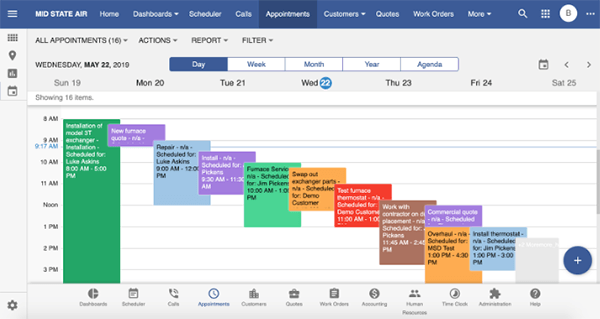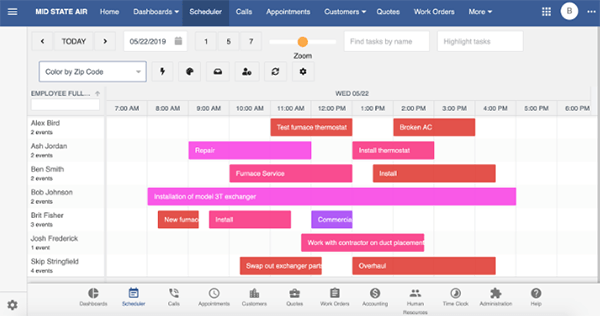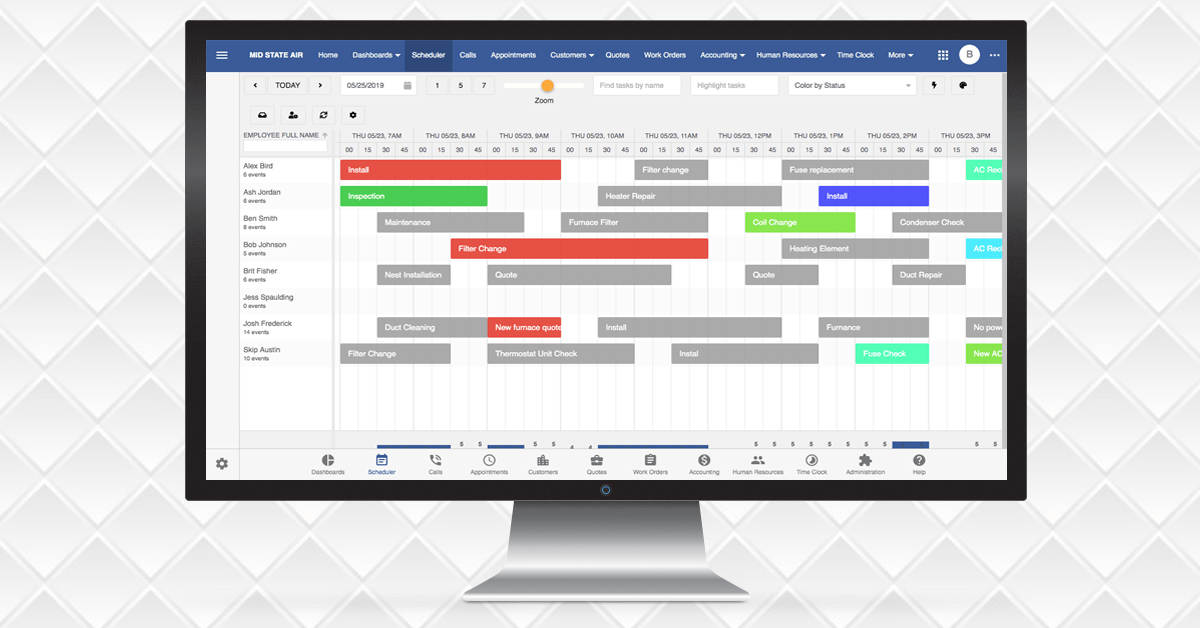Bryntum Scheduler Implementation Spotlight: Smart Service 365
By Ben Yackshaw on Tuesday, May 28, 2019The Bryntum Scheduler powers the magic of Smart Service 365.
For over 28 years, our company has provided scheduling software to 85 verticals of the field service industry (HVAC, plumbing, electrician, etc. companies). Our flagship product, Smart Service, works as a desktop-based QuickBooks add-on, allowing businesses to schedule jobs and dispatch work orders for their QuickBooks customers. Recently, we decided to diversify our offerings and build a SAAS web-app to serve this same clientele. We decided to call this new product Smart Service 365.
The primary feature field service companies look for when evaluating and purchasing software like ours is scheduling, so we knew Smart Service 365 would have to offer amazing, intuitive, easy scheduling. Our customers typically have at least one full-time dispatcher taking calls and setting schedules in the office. Those dispatchers then electronically send those jobs (in the form of digital work orders) to a team of field technicians. We built a scheduling system that fulfilled these basic needs for Smart Service 365. However, the software environment we used limited our system to only one native scheduling view:

This worked pretty well for companies with only 2 or 3 technicians, but many of our customers have far bigger workforces (with fleet sizes of 40+ technicians). When loading this scheduler with the number of projects/service calls a bigger field service company would face in a given day, some major problems arose. First, the scheduler became impossible to parse at a glance. Second, office dispatchers could not easily see/understand the workload/availability of individual field technicians, a view absolutely critical to their job function.
Using the Bryntum Scheduler with Smart Service 365
The Bryntum Scheduler immediately addressed our chief issues, giving office dispatchers a more convenient, intuitive, legible view of a day’s schedule. Most crucially, it offered a clean view of each individual technician’s schedule and availability:

This view allows dispatchers to nimbly schedule new jobs. Available time slots can now be found in a matter of seconds.
The ability of dispatchers to see the workload, status, and progress of individual technicians allows them to assign and reassign work as needed. This allows users to optimize schedules, maximizing profitability by fitting more jobs into a single workday.
Implementation Details
Because Bryntum Scheduler is based on JavaScript, our developers found it a relatively simple matter to expand and add to it with our own JavaScript code. All told, we found integrating Bryntum Scheduler into our existing system a straightforward matter. The voluminous documentation offered by Bryntum went a long way towards helping us realize our ideas within the Smart Service 365 scheduler.
Here are some of the features we added:
- Waiting List – In the field service industry, businesses cannot always schedule jobs right away. Often, they have to wait for weather conditions to improve, or for certain equipment/personnel to become available. For such jobs, we created a waiting list. In the Bryntum Scheduler, dispatchers can move jobs from the waiting list to/from a technician’s schedule as conditions change. We expect close to 100% of our customers to benefit from this feature.
- Preset Jobs – Many of our customers offer a pretty standard list of services (document destruction clients, for example, typically shred a predictable amount of bins on each stop). We came up with a way to allow users to drag preset services onto the scheduler (for example 1, 2, and 3 bin shreddings) from a sidebar. This will save dispatchers considerable time and hassle during the scheduling process.
- Timecard Punches – After integrating the scheduler with our time clock, we added timestamps on each technician’s schedule to indicate when they clocked in, went on break, and clocked out for the day.
- Color Coding – The Bryntum Scheduler gave our dispatchers the ability to color code jobs by location, job type, priority, or status, allowing them to easily create routes and follow a technician’s job progress.
These tools make life easier for dispatchers, and allow managers to keep tabs on everything happening within their business.
Looking Ahead
Smart Service 365 now offers convenient, intuitive scheduling. The ease and appeal of scheduling should hook customers on our product and allow them to focus on the billing, marketing, and customer management tasks that will ultimately help them grow their business.


